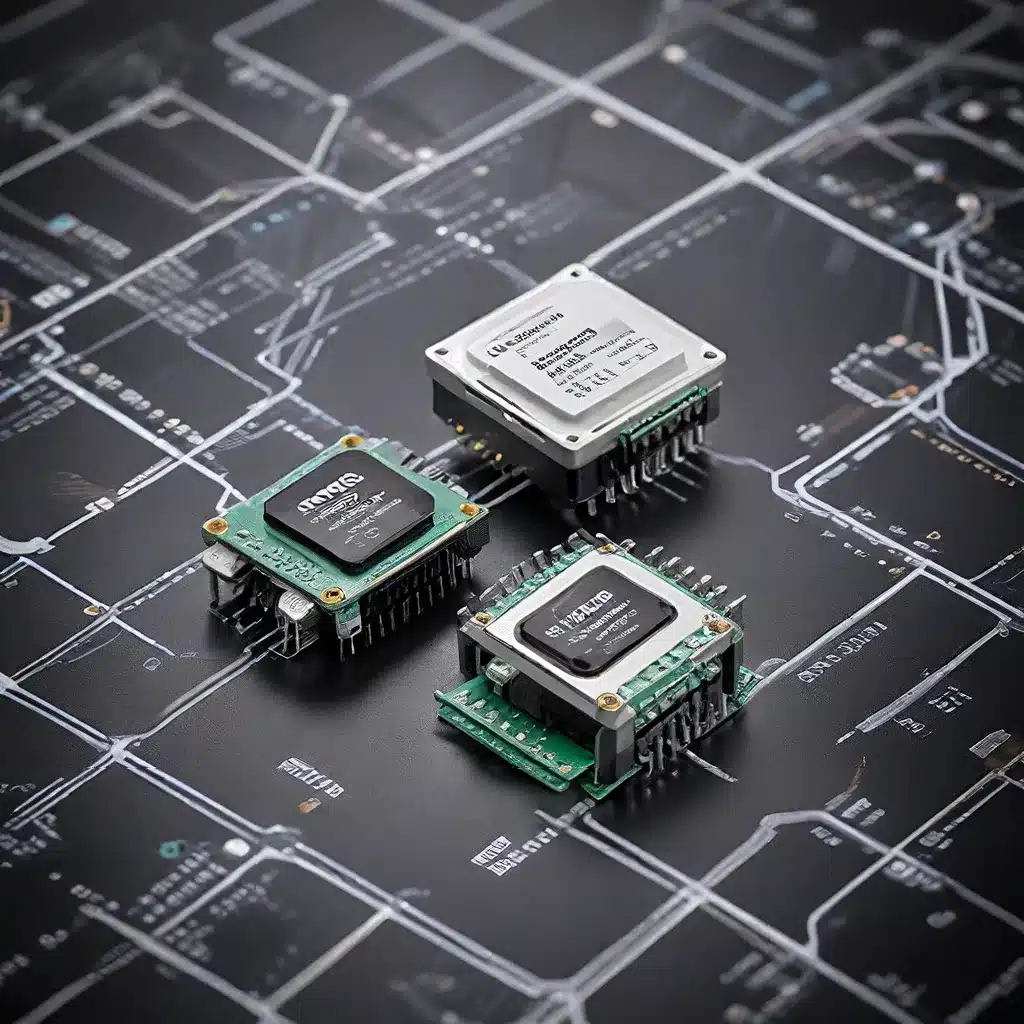
In the rapidly evolving world of sensor networks and Internet of Things (IoT), the need for robust and reliable connectivity has become paramount. As more devices and sensors are integrated into our homes, businesses, and infrastructure, ensuring seamless, redundant, and secure data transmission is crucial. One innovative approach to addressing this challenge is the development of dual-Ethernet sensor nodes – a game-changing technology that is transforming the landscape of IoT connectivity.
The Significance of Dual-Ethernet Sensor Nodes
Wireless connectivity has long been the preferred choice for IoT deployments, offering the convenience of untethered installations and the flexibility to adapt to changing environments. However, wireless networks can be susceptible to interference, signal degradation, and limited range, particularly in dense urban areas or buildings with thick walls. This can lead to unreliable connectivity, data loss, and ultimately, the failure of critical IoT applications.
Dual-Ethernet sensor nodes address these challenges by providing a more robust and redundant approach to IoT connectivity. These devices feature two Ethernet ports, allowing them to be connected to the network via two separate physical paths. This redundancy ensures that if one Ethernet link fails, the sensor node can seamlessly switch to the secondary link, maintaining uninterrupted data transmission and system functionality.
Enhancing Reliability with Dual-Ethernet Design
The dual-Ethernet design of sensor nodes offers several key advantages that contribute to their reliability and resilience:
-
Failover Capabilities: In the event of a network disruption or failure of a single Ethernet connection, the sensor node can automatically switch to the secondary link, ensuring that data continues to flow without interruption. This redundancy is particularly valuable in mission-critical IoT applications, where downtime can have significant consequences.
-
Increased Bandwidth: By utilizing both Ethernet ports simultaneously, dual-Ethernet sensor nodes can effectively double the available bandwidth for data transmission. This is especially beneficial for IoT applications that require high-throughput data exchange, such as video surveillance, industrial automation, or real-time analytics.
-
Flexible Deployment Options: The dual-Ethernet design allows for greater flexibility in sensor node deployment. Nodes can be placed in locations where a single Ethernet connection might not be feasible or reliable, such as in remote areas or buildings with poor network infrastructure. The availability of two Ethernet ports enables alternative connectivity options, ensuring that the sensor network remains resilient and adaptable to changing environments.
-
Simplified Network Management: Dual-Ethernet sensor nodes can simplify the overall network management and troubleshooting process. If a single Ethernet link experiences issues, network administrators can quickly identify and address the problem without disrupting the entire sensor network. This reduces the time and resources required to maintain the IoT infrastructure, leading to greater operational efficiency.
Addressing Security Concerns in IoT Environments
Private 5G networks have emerged as a promising solution for secure and reliable IoT connectivity, offering dedicated and customizable wireless infrastructure tailored to the needs of enterprises. However, the adoption of private 5G networks may not be feasible for all organizations due to cost, complexity, or the need for specialized expertise.
Dual-Ethernet sensor nodes can serve as a complementary approach to address security concerns in IoT environments. By leveraging the inherent security features of wired Ethernet connections, these nodes can provide a more secure alternative to traditional wireless IoT deployments. The use of two physical network paths reduces the attack surface and minimizes the risk of unauthorized access, making it more challenging for malicious actors to compromise the sensor network.
Moreover, the dual-Ethernet design enables the implementation of advanced security measures, such as network segmentation and access control. Network administrators can isolate sensor nodes into separate VLANs or subnets, limiting the lateral movement of potential threats and enhancing the overall security posture of the IoT infrastructure.
Optimizing Energy Efficiency and Power Management
Energy management is a crucial consideration in the design and deployment of sensor networks, especially in remote or resource-constrained environments. Dual-Ethernet sensor nodes can contribute to improved energy efficiency by leveraging the advanced power management capabilities of modern Ethernet switches and routers.
Many Ethernet-enabled devices support technologies such as Power over Ethernet (PoE) and Energy Efficient Ethernet (EEE), which allow for the efficient delivery and utilization of electrical power. Dual-Ethernet sensor nodes can take advantage of these features, minimizing the need for dedicated power sources and reducing the overall energy consumption of the IoT infrastructure.
Furthermore, the redundancy offered by the dual-Ethernet design can enable more efficient power management strategies. If one Ethernet link experiences a failure or disruption, the sensor node can seamlessly switch to the secondary link, potentially reducing the need for power-hungry failover mechanisms or backup batteries.
The Future of Sensor Networks and IoT Connectivity
As the Internet of Things continues to evolve and expand, the demand for reliable, secure, and energy-efficient connectivity solutions will only increase. Dual-Ethernet sensor nodes represent a significant step forward in addressing these challenges, offering a robust and adaptable approach to IoT deployments.
By combining the inherent advantages of wired Ethernet connections with the flexibility and redundancy of a dual-port design, dual-Ethernet sensor nodes are poised to play a crucial role in the future of sensor networks and IoT. This technology can enable organizations to deploy mission-critical IoT applications with confidence, knowing that their sensor network infrastructure is resilient, secure, and optimized for energy efficiency.
As the sensor network and IoT community continues to innovate and evolve, the adoption of dual-Ethernet sensor nodes will undoubtedly be a key factor in shaping the future of connected devices and smart environments. This innovative approach to IoT connectivity is a testament to the ongoing efforts to create a more robust, reliable, and sustainable IoT ecosystem.